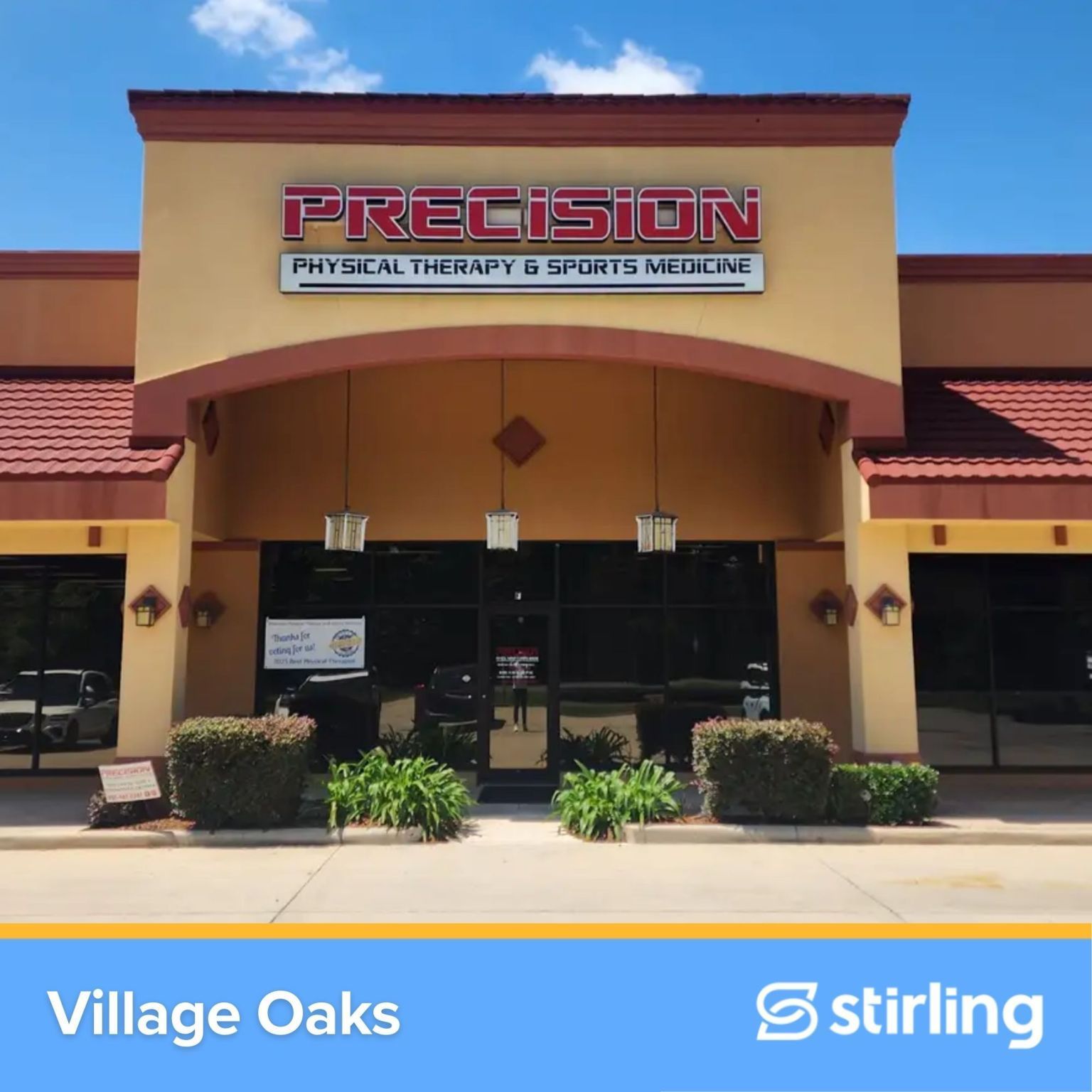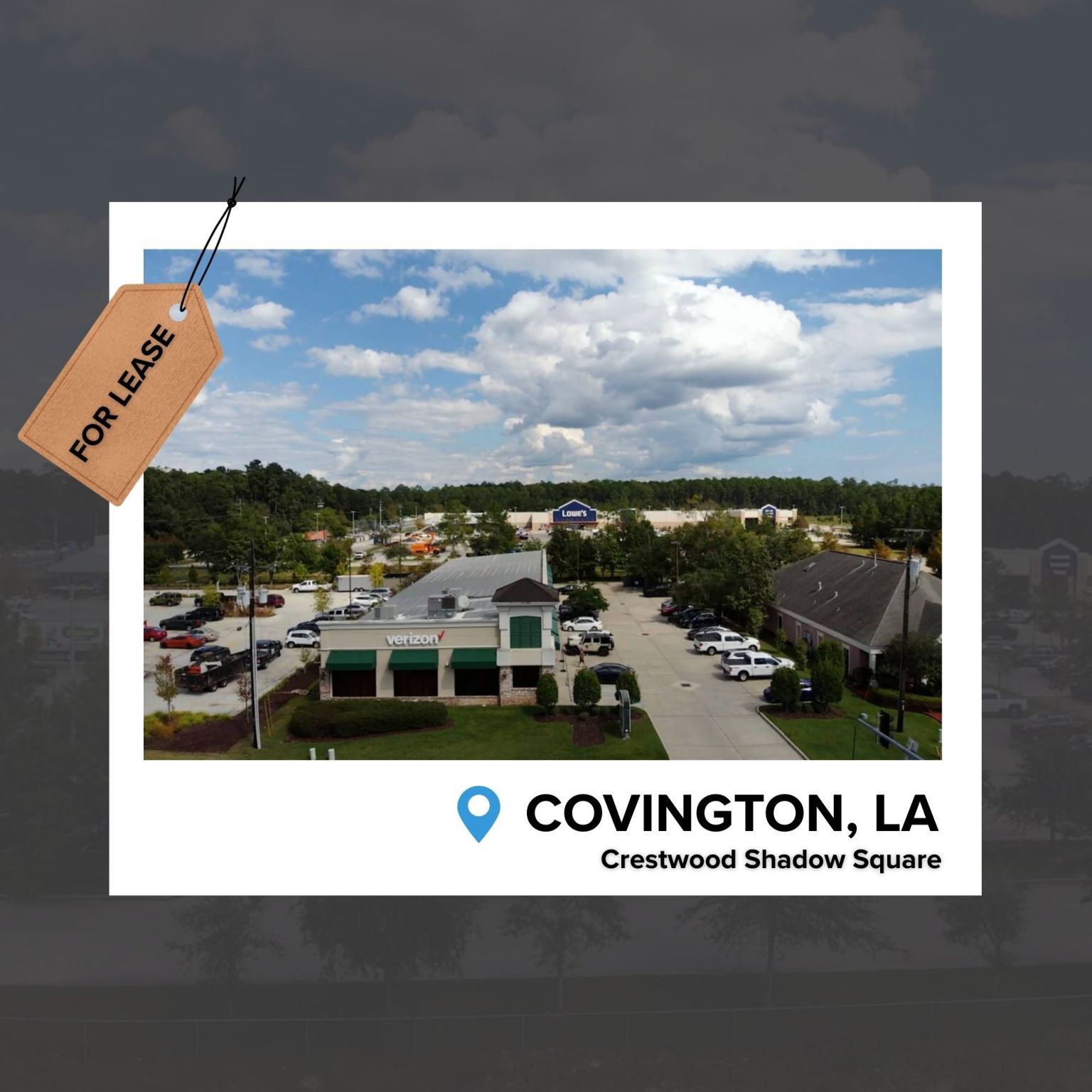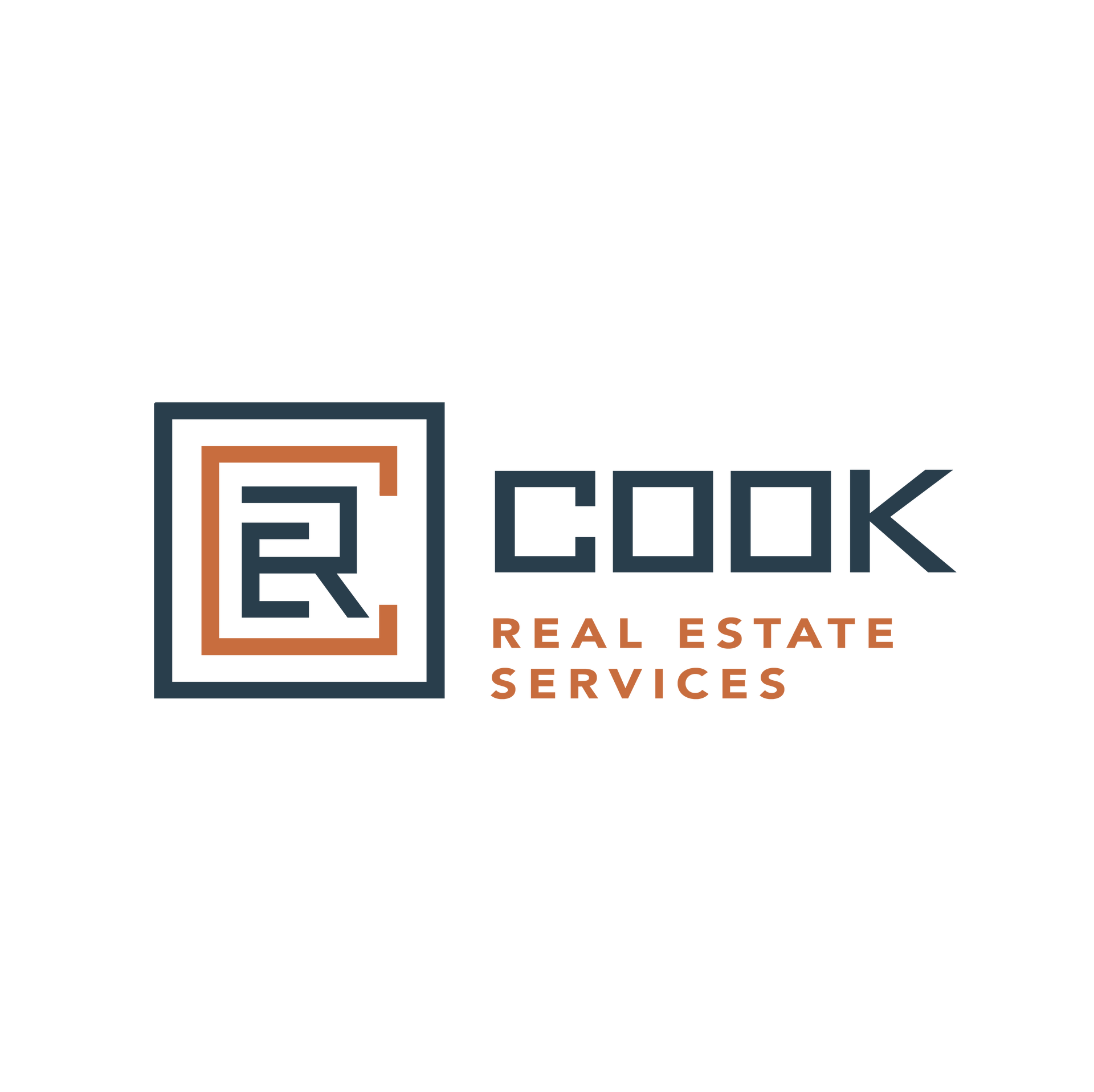Why Industrial Sale-Leasebacks Are the Hidden Goldmine Smart Operators Are Banking On
Curated for Manufacturing Leaders, Industrial Operators and Strategic Property Owners in Southeast Louisiana
In the heart of Southeast Louisiana's industrial corridor, where manufacturing facilities hum with activity and distribution centers orchestrate the flow of commerce, a quiet revolution is taking place. Business owners who've built their operations around the industrial properties they own are discovering a financial strategy that's been hiding in plain sight. While most operators focus on optimizing production lines and supply chains, the savviest among them are unlocking millions in trapped capital without missing a single day of operations.
The secret weapon? Industrial sale-leasebacks. This sophisticated transaction structure is transforming how manufacturing companies, distribution centers and industrial operators think about their real estate assets. Yet despite the compelling advantages, industrial sale-leasebacks remain one of the most underutilized strategies in the Gulf South's business landscape. For those bold enough to explore this opportunity, the timing couldn't be more perfect.
The Industrial Real Estate Landscape: A Perfect Storm of Opportunity
Southeast Louisiana's industrial market is experiencing unprecedented dynamics that create a rare window of opportunity for owner-occupants. Manufacturing facilities, distribution centers and specialized industrial properties are commanding premium valuations while vacancy rates hover at historic lows. The convergence of several market forces has created what industry insiders are calling a "perfect storm" for industrial sale-leaseback transactions.
The region's strategic position along major shipping routes, combined with robust port infrastructure and rail connectivity, has attracted institutional investors seeking stable, income-producing industrial assets. These investors are particularly drawn to facilities with established operators already in place, recognizing that the combination of prime real estate and proven business operations creates a compelling investment thesis.
Construction costs for new industrial facilities have skyrocketed, with steel prices, concrete costs and specialized equipment driving development expenses to levels that make existing facilities increasingly valuable. Environmental regulations and permitting complexities have further constrained new supply, intensifying competition for quality industrial properties. For owner-occupants, this scarcity translates directly into enhanced property values and increased investor interest.
The financing landscape adds another layer of opportunity. Traditional commercial lending has become more restrictive, making it challenging for businesses to access capital through conventional refinancing. Simultaneously, institutional capital continues flowing into industrial real estate, creating a disconnect between what businesses can borrow against their properties and what investors are willing to pay for them. Sale-leasebacks bridge this gap, allowing operators to access the full market value of their facilities while maintaining operational control.
Decoding the Industrial Sale-Leaseback: More Than Just a Transaction
An industrial sale-leaseback represents far more than a simple property transaction. It's a strategic financial restructuring that allows manufacturing companies, distribution companies and industrial business operators to convert illiquid real estate assets into working capital while maintaining complete operational control of their facilities. The elegance lies in its simplicity: sell your industrial property to an investor, then lease it back under terms that align with your business objectives.
The structure addresses a fundamental challenge facing many industrial small to medium sized business operators. Over years or decades, successful businesses often accumulate significant equity in their facilities through property appreciation, mortgage principal payments and capital improvements. This equity, while valuable on paper, remains locked away and unavailable for business growth, equipment upgrades or strategic initiatives. Traditional refinancing can access some of this equity, but it comes with debt service obligations and lending restrictions that may not align with business cash flows.
Industrial sale-leasebacks eliminate these constraints by converting equity into immediate liquidity without creating debt obligations. The lease payments become operating expenses, often providing tax advantages compared to mortgage interest and depreciation. More importantly, the capital unlocked through the sale can be deployed immediately into revenue-generating activities, equipment purchases, facility expansions or strategic acquisitions.
The lease terms in industrial sale-leasebacks are typically structured as long-term agreements, often spanning ten to twenty years with multiple renewal options. However, as the operator and real estate owner, the business owner’s needs drive the negotiations by determining the price point, lease rate and ultimate term length of the lease structure. This provides operational stability while giving businesses the flexibility to negotiate terms that complement their specific operational requirements. Unlike standard commercial leases, sale-leaseback agreements often include provisions that recognize the tenant's intimate knowledge of the facility and operational needs.
The Manufacturing Advantage: Why Industrial Properties Excel in Sale-Leasebacks
Manufacturing facilities and specialized industrial properties possess unique characteristics that make them particularly attractive for sale-leaseback transactions. Unlike generic office buildings or retail spaces, industrial facilities often feature specialized infrastructure, equipment installations and operational configurations that create natural barriers to tenant turnover. This specialization works to the advantage of both the selling business and the purchasing investor.
From the investor's perspective, a manufacturing facility with an established operator represents a lower-risk investment compared to vacant industrial space. The existing tenant understands the facility's operational requirements, maintenance needs and optimal utilization. This operational expertise reduces the investor's management burden while providing confidence in the property's continued productive use.
The specialized nature of many industrial facilities also creates what real estate professionals call "tenant stickiness." A food processing plant with specialized refrigeration systems, a chemical manufacturer with custom ventilation and safety systems or a metal fabricator with heavy equipment installations faces significant costs and operational disruption if forced to relocate. This natural reluctance to move provides investors with confidence in long-term lease stability.
Industrial properties also benefit from the current emphasis on supply chain resilience and domestic manufacturing. The pandemic highlighted vulnerabilities in global supply chains, leading many companies to prioritize local and regional production capabilities. This trend has increased demand for industrial facilities while reinforcing the strategic value of existing manufacturing operations.
The physical characteristics of industrial properties often align well with investor preferences. Large, functional buildings on substantial land parcels provide opportunities for future expansion or alternative uses. The durability of industrial construction, combined with the practical nature of manufacturing operations, typically results in well-maintained facilities that retain their value over time.
Unlocking Capital in Today's Market: The Financial Mechanics
The financial dynamics of industrial sale-leasebacks in today's market environment create compelling opportunities for businesses to optimize their capital structure. With industrial property values at or near historic highs, owner-occupants often discover they're sitting on significantly more equity than they realized. This appreciation, combined with years of mortgage principal payments and capital improvements, can represent millions of dollars in untapped value.
The sale-leaseback process begins with a comprehensive property valuation that considers not just the real estate, but the value created by the existing operational setup. Investors recognize that a functioning manufacturing facility with established workflows, utility connections and regulatory approvals carries premium value compared to vacant industrial space. This operational premium often results in sale prices that exceed what businesses might expect based on traditional appraisal methods.
The lease component of the transaction is structured to provide operational continuity while generating attractive returns for the investor. Lease rates are typically set at market levels, but the long-term nature of the agreements and the quality of the tenant often result in favorable terms compared to what businesses might face in the open market. The predictability of lease payments also aids in business planning and cash flow management.
Tax considerations play a significant role in the financial benefits of industrial sale-leasebacks. The conversion from ownership to tenancy transforms mortgage interest and depreciation deductions into lease expense deductions, which are often more favorable from a tax perspective. The immediate recognition of capital gains from the property sale can be managed through various tax strategies, while the ongoing lease payments provide consistent tax benefits.
The capital unlocked through the sale creates immediate opportunities for business growth and optimization. Manufacturing companies are using sale-leaseback proceeds to hire needed laborers, invest in automation equipment, expand production capacity, open new markets and develop new product lines. Distribution centers are upgrading material handling systems, expanding into new markets and investing in the latest software to help streamline and improve their supply chain and transportation systems. The key advantage to the sale-leaseback is that the capital comes without the restrictions that can typically be associated with traditional financing.
Strategic Applications: How Industrial Leaders Are Leveraging Sale-Leasebacks
Across Southeast Louisiana's industrial landscape, forward-thinking business leaders are discovering innovative applications for sale-leaseback strategies that extend far beyond simple capital access. These strategic implementations demonstrate the versatility and power of this financial tool when applied thoughtfully to specific business challenges and opportunities.
Family-owned small businesses, many of which have operated for multiple generations, are using sale-leasebacks to address succession planning challenges while maintaining operational continuity. The capital unlocked through these transactions provides liquidity for estate planning purposes, allows for the buyout of inactive family members and creates resources for the next generation to invest in business modernization. Rather than forcing the sale of the entire business to access real estate equity, sale-leasebacks allow families to maintain control while optimizing their financial position.
Regional distribution companies are leveraging sale-leasebacks to consolidate and optimize their facility networks. The capital from selling existing properties provides resources to acquire additional locations, upgrade material handling systems and expand into new geographic markets. This strategic approach allows companies to maintain their existing operational footprint while funding expansion initiatives that would otherwise require significant external financing.
Manufacturing companies facing equipment modernization needs are finding sale-leasebacks particularly valuable. The industrial sector is experiencing rapid technological advancement, with automation, robotics and digital manufacturing systems requiring substantial capital investments. Sale-leaseback proceeds provide the immediate funding necessary to implement these technologies without disrupting cash flows or taking on restrictive debt obligations.
Owners preparing for eventual sale or acquisition are using sale-leasebacks to optimize their financial presentation to potential buyers. By converting real estate assets to cash and improving the earnings before interest, taxes, depreciation and amortization (EBITDA) through the elimination of mortgage payments, businesses can command higher sale multiples while presenting a cleaner, more focused operational profile to acquirers. This strategy is particularly effective for companies where real estate represents a significant portion of total asset value.
Environmental compliance and facility upgrades represent another strategic application for sale-leaseback capital. Industrial operations face increasing regulatory requirements related to environmental protection, worker safety and operational efficiency. The substantial costs associated with compliance upgrades can strain business cash flows, but sale-leaseback proceeds provide the necessary funding while maintaining operational flexibility.
The Investor Perspective: Why Industrial Sale-Leasebacks Attract Premium Capital
Understanding the investor perspective on industrial sale-leasebacks provides valuable insight into why these transactions often result in favorable terms for selling businesses. Institutional investors, private equity funds and specialized real estate investment firms are increasingly drawn to industrial sale-leaseback opportunities for reasons that directly benefit the businesses involved.
The stability and predictability of industrial operations make them attractive to investors seeking consistent, long-term returns. Unlike retail or office properties that may face tenant turnover and market volatility, established manufacturing and distribution operations provide reliable cash flows backed by substantial operational investments. The specialized nature of many industrial facilities creates natural barriers to tenant departure, providing investors with confidence in lease stability.
Industrial properties also offer investors exposure to favorable long-term trends in manufacturing, logistics and supply chain management. The ongoing reshoring of manufacturing operations, growth in e-commerce fulfillment and emphasis on supply chain resilience all support demand for industrial facilities. Investors recognize that partnering with established operators provides access to these trends while minimizing operational risks.
The current interest rate environment makes industrial sale-leasebacks particularly attractive to investors. With traditional real estate financing becoming more expensive and restrictive, investors are seeking alternative ways to deploy capital into income-producing assets. Sale-leasebacks provide immediate cash flow without the development risks and timeline uncertainties associated with ground-up construction.
Institutional investors also value the operational expertise that comes with established industrial tenants. Manufacturing companies and distribution operators possess deep knowledge of their facilities' optimal utilization, maintenance requirements and operational capabilities. This expertise reduces the investor's management burden while ensuring the property continues to be utilized productively.
The scale and quality of many industrial facilities align well with institutional investment criteria. Large manufacturing plants and distribution centers represent substantial capital deployments that can absorb significant investment amounts while providing diversification benefits within broader real estate portfolios. The durability and functionality of industrial construction also appeal to investors focused on long-term asset preservation.
Navigating the Process: From Evaluation to Execution
The industrial sale-leaseback process requires careful planning and execution to achieve optimal results while maintaining operational continuity. Understanding the key phases and considerations helps business owners approach these transactions with confidence and realistic expectations.
THE EVALUATION PHASE: This initial phase begins with a comprehensive assessment of the property's market value, the depreciable status of the asset and the business's capital needs. This involves more than a traditional appraisal, as investors consider the operational value created by the existing business setup. Specialized equipment installations, utility infrastructure, regulatory approvals and operational workflows all contribute to the property's investment appeal. Businesses should engage professionals experienced in industrial sale-leasebacks to ensure accurate valuation and optimal positioning.
THE MARKETING PHASE: In most cases a focused effort to market the Sale Lease back opportunity is needed to help achieve the desired outcome of connecting a qualified buyer. Market timing plays a crucial role in maximizing sale-leaseback benefits. Current market conditions in Southeast Louisiana's industrial sector are particularly favorable, with strong investor demand and limited supply driving premium valuations. However, businesses should also consider their own operational cycles, capital needs and strategic timing when evaluating sale-leaseback opportunities.
THE NEGOTIATION PHASE: This phase involves structuring the agreement and negotiating lease terms that balance investor return requirements with operational needs. Key considerations include lease duration, renewal options, rent escalation mechanisms and operational rights. Industrial businesses often require specific provisions related to equipment installations, facility modifications and operational flexibility that differ from standard commercial lease terms.
THE DUE DILIGENCE PHASE: Once the deal structure is deemed to be achievable by both sides, the Purchaser/Investor willlikely spend some time evaluating the property itself and the aspects of the business it deems important to the bottom line and sustainability of the business. Due diligence in industrial sale-leasebacks extends beyond typical real estate transactions to include operational, environmental and regulatory considerations. Investors will evaluate the business's operational stability, environmental compliance and long-term viability as a tenant. Businesses should prepare comprehensive documentation of their operational history, compliance status and future business plans.
THE CLOSING PHASE: The execution or closing phase requires coordination between multiple parties, including legal counsel, tax advisors, environmental consultants and operational teams. Industrial sale-leasebacks often involve complex documentation that addresses operational rights, environmental responsibilities and long-term relationship management between the business and property owner.
Risk Management and Mitigation Strategies
While industrial sale-leasebacks offer compelling advantages, successful implementation requires careful attention to potential risks and appropriate mitigation strategies. Understanding these considerations helps businesses make informed decisions and structure transactions that protect their long-term interests.
The most significant risk in any sale-leaseback transaction is the loss of property ownership and the associated long-term appreciation potential. Industrial properties in prime locations with established operations often appreciate significantly over time, and businesses forfeit this upside when they sell. However, this risk must be weighed against the immediate capital benefits and the opportunity cost of leaving equity trapped in real estate rather than deployed in business growth initiatives.
Lease dependency represents another consideration, as businesses become tenants in properties they previously owned. This creates exposure to potential rent increases, lease renewal negotiations and the theoretical possibility of non-renewal. However, the specialized nature of most industrial facilities and the substantial costs associated with relocation provide natural protection against unreasonable landlord behavior.
Operational flexibility can be impacted by the transition from ownership to tenancy, particularly regarding facility modifications, expansions or changes in use. Careful lease structuring can address these concerns by including appropriate rights for alterations, expansions and operational changes. Many industrial sale-leaseback agreements include provisions that recognize the tenant's operational expertise and provide flexibility for business evolution.
Financial risk management involves ensuring that lease obligations align with business cash flows and don't create undue financial strain during economic downturns. Conservative lease structuring, appropriate renewal options and careful consideration of rent escalation mechanisms help protect against future financial challenges.
Environmental liability represents a unique consideration in industrial sale-leasebacks, as both the selling business and purchasing investor must address potential environmental issues. Comprehensive environmental due diligence, appropriate liability allocation and ongoing compliance management are essential components of successful industrial sale-leaseback transactions.
The Competitive Advantage: Why Early Movers Win
In Southeast Louisiana's evolving industrial landscape, businesses that move quickly to evaluate and implement sale-leaseback strategies often secure significant competitive advantages over those who delay. The current market environment creates a narrow window of optimal conditions that may not persist indefinitely.
Investor appetite for industrial sale-leaseback opportunities is currently strong, but this demand is not unlimited. As more businesses discover the benefits of these transactions, competition for investor capital may increase, potentially leading to less favorable terms for future deals. Early movers benefit from current market dynamics while avoiding potential future competition.
The regulatory and economic environment also supports current sale-leaseback activity. Tax policies, interest rate trends and industrial development incentives all align to make these transactions particularly attractive in the current environment. Changes in any of these factors could impact the relative benefits of sale-leaseback strategies.
Operational advantages accrue to businesses that unlock capital early in economic cycles. The ability to invest in equipment upgrades, facility improvements and business expansion while competitors remain capital-constrained can create lasting competitive advantages. Industrial businesses that modernize their operations and expand their capabilities during favorable market conditions often emerge stronger when economic conditions become more challenging.
The strategic benefits of sale-leasebacks also compound over time. Businesses that optimize their capital structure early can pursue growth opportunities, acquire competitors and invest in market-leading capabilities that create sustainable competitive advantages. The flexibility provided by improved liquidity allows for opportunistic decision-making that can transform business trajectories.
Future-Proofing Industrial Operations Through Strategic Real Estate Decisions
The industrial sector is experiencing unprecedented change driven by technological advancement, supply chain evolution and shifting market dynamics. In this environment, strategic real estate decisions can significantly impact long-term business success and competitiveness.
Sale-leasebacks provide industrial businesses with the financial flexibility necessary to adapt to changing market conditions and technological requirements. The capital unlocked through these transactions can fund automation initiatives, digital transformation projects and operational upgrades that position businesses for future success. Rather than having equity trapped in real estate, businesses can deploy capital in revenue-generating activities that drive growth and competitiveness.
The lease structure in sale-leaseback transactions also provides operational flexibility that can be valuable as business needs evolve. Well-structured lease agreements include provisions for facility modifications, expansions and operational changes that allow businesses to adapt their physical footprint to changing requirements. This flexibility can be particularly valuable in industries experiencing rapid technological change or market evolution.
Environmental and sustainability considerations are becoming increasingly important in industrial operations. Sale-leaseback capital can fund environmental upgrades, energy efficiency improvements and sustainability initiatives that reduce operational costs while meeting evolving regulatory requirements. These investments often provide both immediate operational benefits and long-term competitive advantages.
The global trend toward supply chain localization and resilience also supports the strategic value of established industrial operations. Businesses with modern, efficient facilities in strategic locations are well-positioned to benefit from ongoing changes in global supply chain strategies. Sale-leaseback transactions can provide the capital necessary to optimize these facilities for evolving market requirements.
Making the Decision: Is an Industrial Sale-Leaseback Right for Your Business?
The decision to pursue an industrial sale-leaseback requires careful evaluation of business The decision to pursue an industrial sale-leaseback requires careful evaluation of business objectives, financial position and strategic priorities. While these transactions offer compelling advantages, they're not appropriate for every situation or business. Here are a few questions to ask yourself as you ponder this potential direction:
Business Objectives & Financial Needs
Do I have substantial equity in the real estate my business occupies?
Does my business have immediate capital needs that could be addressed through a sale-leaseback?
Am I currently pursuing growth initiatives, equipment upgrades or expansion that require significant funding?
Would converting real estate equity into cash provide the liquidity needed to support strategic goals?
How does the lease vs mortgage payment affect my bottom line and tax liability?
Strategic and Long-Term Considerations
Am I planning for business succession or an eventual sale in the next few years?
Would a sale-leaseback help streamline and optimize my company’s capital structure?
Is improved financial flexibility a key part of my long-term business strategy?
Would leasing the property help me focus more on business operations rather than asset management?
Is there are stronger ROI on the real estate ownership or business that should help drive where I am investing capital?
Market Timing
Are current market conditions favorable for selling industrial property in my region (e.g., strong investor demand and high property values)?
Would I be able to obtain a premium price for my building if I sold it now?
Does the current timing align with my capital needs or strategic transition timeline?
How do real estate lease values look for expansion into new markets?
Does my current real estate's location have a stronger upside or downside long term?
Operational Control & Culture
How important is real estate ownership to my company’s identity or operations?
Am I comfortable shifting from being an owner to being a tenant in the same facility?
Do I value the control and flexibility of owning the property more than the financial gains of selling it?
Will a lease agreement still provide me with enough operational flexibility to run my business effectively?
What unforeseen concerns have I not considered as it pertains to growth, expenses, employees, retirement, etc.
The Path Forward: Seizing the Industrial Sale-Leaseback Opportunity
Southeast Louisiana's industrial sector stands at a unique inflection point where market conditions, investor appetite and business capital needs converge to create exceptional opportunities for sale-leaseback transactions. The businesses that recognize and act on these opportunities position themselves for enhanced competitiveness and strategic flexibility in an evolving marketplace.
The current market environment may represent a once-in-a-decade opportunity for industrial businesses to optimize their capital structure while maintaining operational control. Property valuations are at or near historic highs, investor demand remains strong and the economic environment supports strategic capital deployment. These conditions create a narrow window of optimal timing that may not persist indefinitely.
For industrial businesses sitting on substantial real estate equity while facing capital needs for growth, modernization or strategic initiatives, sale-leasebacks offer a compelling solution. The ability to unlock millions in trapped capital while maintaining complete operational control addresses a fundamental challenge facing many successful industrial operations.
The strategic advantages extend beyond immediate capital access to include improved financial flexibility, enhanced business focus and the ability to pursue growth opportunities that might otherwise remain out of reach. In an increasingly competitive industrial landscape, these advantages can translate into lasting competitive benefits and improved long-term business performance.
The businesses that will thrive in tomorrow's industrial economy are those making strategic decisions today. Sale-leasebacks represent one of the most powerful tools available for optimizing capital structure, funding growth initiatives and positioning for long-term success. The question isn't whether these opportunities exist, but whether forward-thinking business leaders will seize them while conditions remain optimal.
The industrial sale-leaseback opportunity is real, substantial and available now. For businesses ready to unlock their real estate equity while maintaining operational control, the time to act is today. Tomorrow's market leaders are making these strategic decisions now, while their competitors remain anchored to traditional thinking about real estate ownership.
The choice is clear: continue leaving millions in equity trapped in walls and loading docks or unlock that capital to fuel the growth and competitiveness that will define your business's future. The market conditions are right, the opportunities are substantial and the strategic advantages are compelling. The only question remaining is whether you're ready to seize them.





